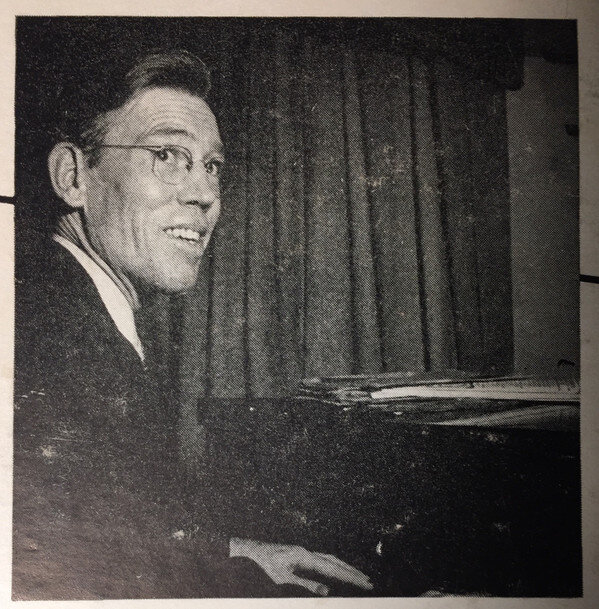In the middle or late nineteen eighties I got a several weeks long engagement in Laredo, Texas, at the La Posada Inn. It is situated in an historic building that once hosted the short-lived independent Republic of Texas. It had a fine restaurant and a bar, with a piano and a piano player to keep customers waiting for a table in a good mood.
I was the piano player and learned to play for long stretches. I think my record duration was over four hours with no interim break. At the end a lady came over and said,” I just had to see who could play and play for that long!” And we talked and she mentioned an uncle of hers who was a musician. His name was Red Camp. A mental light flared up and illuminated a puzzle from long ago. In 1963, on my first US visit, I had been lucky to meet and talk to Lizzie Miles, the “Creole Songbird” and one of the most important singers in early blues and jazz. She had given up blues for religion but had been active recently and she mentioned a session with a remarkable pianist. I wrote down his name and afterwards I couldn’t decipher it. “Red” it said, and “C-something.” I had never been able to figure out his name and filed it the drawer for cold cases.
Until now. Red Camp! The lady saw my enthusiasm and said she would call her uncle and the next day I was sitting at a bar with someone who looked like Lee Marvin on a bad day but who turned out to be a most affable cat. Camp was originally an architect but had played piano around the Midwest and South for decades. He fondly remembered Miles. It was a magic moment, and we talked some, and that was it.

Of course I checked him out and was really taken by his playing. He has recorded on the Cook label, solo albums, and occasionally on harpsichord. He was a completely two-handed pianist and listening to him I began thinking that perhaps the evolution of syncopated, improvised, jazz music consisted of freeing the left hand to do other things. Stride was a culmination of the march left hand tradition but then came people like Earl Hines, Teddy Weatherford, Cassino Simpson, Art Hodes, Teddy Wilson—and Red Camp. Of the things he did with Miles, my favorite is, “Let the Rest of the World Go By.”
Another day, I had just finished dismantling “Pine Top’s Boogie Woogie,” a middle-aged man came up and said, “You know, I saw the man who wrote that!”
I was unwilling to suspend my disbelief and said that there are no photos of the man, no personal recollections, only the story about the stray bullet that ended his life. But he insisted and we sat down at the tape recorder. It was brief. The man told me that he lived along the Mississippi and there were day exclusions on riverboats. One day he went with his parents on one. In one room there was a piano and someone at it. His father pointed to the piano player and said, “See this man? Remember him: his name is Pine Top Smith. He is famous!” So, I asked what he did, what he looked like. Pine Top was tall and lanky, he said, sitting sideways at the piano with a cigarette in the corner of his mouth, playing and talking to people. And that was about it. I have the tape somewhere, but I don’t think I went into musicological details at the time.
So, that is my memory of being a piano player in Laredo, Texas. Since I spent so much time there, and knew the legends of the town, I got a library card and read up on the Yellow Rose, and so forth.
Peter Lundberg, a television producer/director in Gothenburg,Sweden, wasone of the first researchers and performers in modern times to travel around the US and documentthehistoryof ragtime.As a composer, he hasadded significantly to the ragtime repertoire and hasbeen a featured performer overmanyyears atnumerousfestivals.In2019, Peter Lundberg received the Lifetime Achievement Award at the 2019 Scott Joplin International Ragtime Festival in Sedalia, Missouri.




















